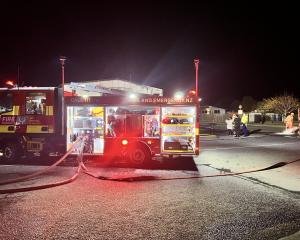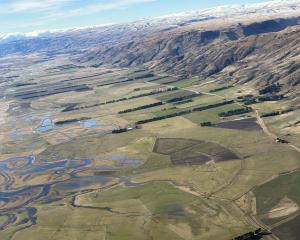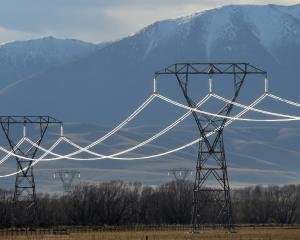Today the company launched a website giving more information about the four possible projects on which public comment is being sought.
It will be next year before a decision is made on the options.
The largest four-turbine dam is that proposed for the Tuapeka Mouth area, with a capacity of 350MW.
If built, the 50m dam would create a lake of about 3400ha extending some 50km upstream from the dam to the Millers Flat area.
It would flood Beaumont town, including the cemetery, the Rongahere Gorge and Birch Island, and 200ha of grazing and 250ha of forestry.
Almost 50km of roads and the Beaumont bridge would also be affected.
The second largest of the options is that for a 185MW capacity, 30m four-turbine dam about 4km upstream from the Beaumont township, creating a 620ha lake which would extend to Millers Flat.
Under this option, Beaumont township would remain and farmland would be flooded.
The company says each of these two proposals could create about 400 jobs over the peak construction period, not expected to begin until after 2015, with about 200 full-time jobs during the first and last years.
The Tuapeka dam would take five years to build, and the Beaumont dam between four and five years.
If either of those proposals proceeded, it was possible more than half the construction workers would be housed without their families near the respective sites.
Workforce numbers are not given for the smaller proposals at Luggate and Queensberry, although it is expected fewer people would be employed.
The dam at Queensberry, with a capacity of 160MW, would take four to five years to build.
A 14m dam would be linked by concrete canal, either to a powerhouse at Gravelly Gully or one at Kidd Creek.
A 220ha lake would be created extending about 8km up the Clutha valley, to near Luggate.
Flooding would involve mainly agricultural land, the company states, and studies are still being undertaken to determine the total extent of this.
This is also the situation with the proposal with the smallest capacity, proposed for Luggate, where a 25m tall, three-turbine dam would produce 86MW.
It would create a 230ha lake extending 15km up the Clutha valley to near Albert Town.
Potential benefits of the projects listed by the company include recreational and tourism opportunities resulting from the lakes, boosts to local economies through the production period and irrigation projects.
Potential adverse effects mentioned include loss of land, flora and fauna, the need for some flood protection works, changes to existing recreation activities such as fishing and kayaking, possible relocation of some local heritage sites and raised river levels.
Contact states initial informal consultation with relevant local authorities and some communities has been generally positive.
The company will be reacting to views posted on the website and hydro project manager Neil Gillespie will be available at 0800 663335 to discuss issues.
Contact communications manager Jonathan Hill said the company would "engage with the community [on] how they want to engage".
Asked what would happen if the most economic option turned out to be the most disliked by the public, Mr Hill said what people told the company would shape its options "as to which to proceed with, if any at all".
Mr Gillespie said it was possible some new ideas or variations on the schemes would surface through the process.
The schemes, which were proposed by Contact's predecessor, Electricity Corporation of New Zealand, more than 20 years ago, had been around for a long time.
He expected to receive a range of views on the proposals, but the company did not want to presume what those views were.
Knowing what the issues were allowed the company to consider how they could be mitigated or managed.












